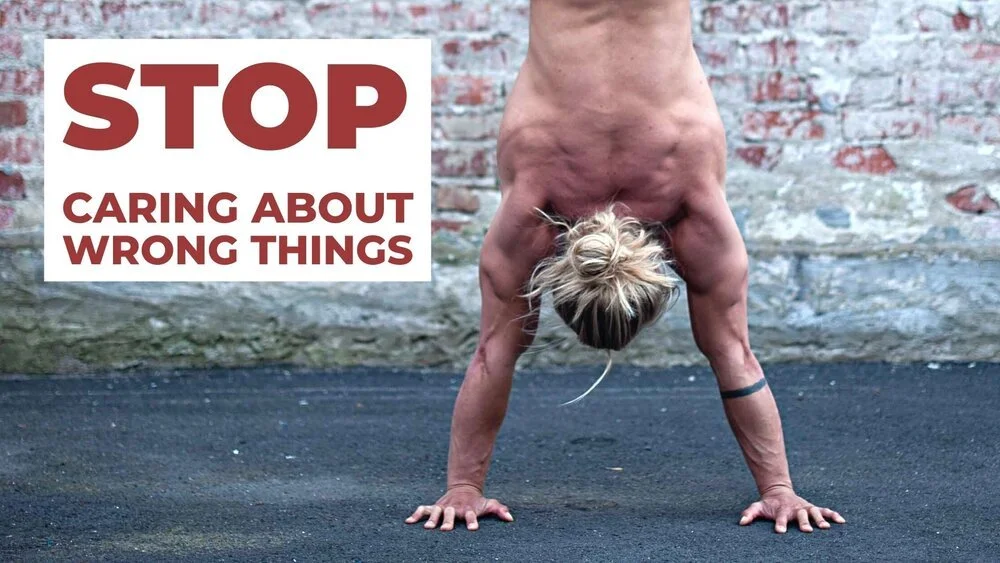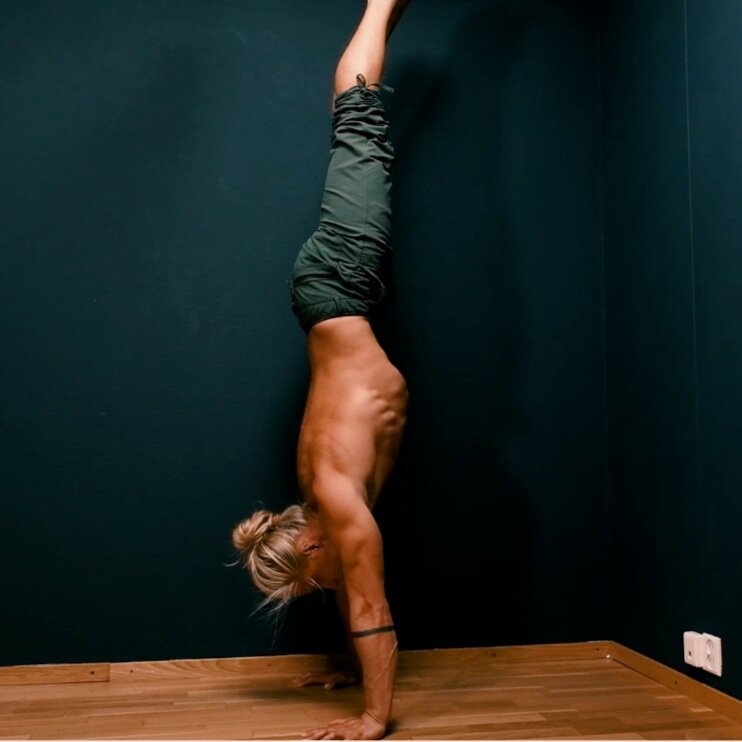10 Things to avoid doing when learning handstand
Handstands are fun; handstands are cool; handstands are impressive! Part of what makes handstanding so impressive, however, is that it can be quite a challenge. It is challenging - but certainly not impossible! And, I believe, if you keep some of these common mistakes that people make while they learn to handstand in mind, you will be well on your way to tackling this challenging and fun movement. So, if you’ve come here to learn how to do a handstand, then you’re in the right place. In this article I will highlight 10 common mistakes I see people making while learning to handstand, and how to overcome them. Learning to handstand is a crucial part of your calisthenics journey, and it is a great way to build bodyweight strength. Here are 10 things to avoid in mastering one!
Not being comfortable upside down.
Perhaps the most important part of the handstand journey is getting used to falling. Being afraid of falling will hold us back from progress and take our focus away from the handstand itself. Learning to fall is important, so that we aren't distracted by fear when we should be thinking about the handstand. Falling is a skill, and a skill that should be practiced.
In this picture I’m in the middle of a “wheel-out”, an effective technique for coming out of a handstand, and one I recommend learning. You can check out how to do a wheel-out here.
2. Thinking soft ground is good ground..e.g. Mattresses, blankets.
Think of standing on the floor with one foot vs standing on a pillow with one foot - standing on the pillow is much harder! The same goes for when you’re balancing on your hands. At the beginning of our handstand training, we tend to put a lot of weight at the palm of our hands already, and on soft ground this will cause our wrists to be at an even steeper angle. This will cause even more pain to your wrist than you might already be feeling. If you’re seeking softness for protection when you start out, for example in the form of a mattress or pillow or blankets, place those things around you, to fall onto. Don’t do the handstands on these softer surfaces.
Using soft ground puts your wrist at even more of an angle than it would be on hard ground, and this will cause pain to your wrists.
3. Being egocentric in your training- disregarding the proper steps needed to improve.
You are trying to continually just jump straight to the handstand; rather than using the wall in progressively more advanced positions. Listen to people who have more experience than you, and learn to structure your training with stepwise goals. Remember, for a detailed program which includes all the progressions necessary to master the handstand, you can always head to my app! :)
Training smart for you handstand as opposed to egocentric handstand training may be the difference between spending months, or year(s) learning to handstand.
4. Thinking the wall is your enemy.
The wall is our friend, no matter where we are in our handstand journey. The wall is always the same, so it can be used well as a reference. On the other hand, don’t always use the wall. Balance(no pun intended) using the wall with free-standing training.
Whether you are a beginner or advanced, the wall is an invaluable tool in your handstand program.
4.5 : Not using my app :)
Joking, but on a serious note, if you really want to take your hand balancing and calisthenics more seriously, you should check out my app, where fully handstand programs and tons of other skills tutorials and programs are fully designed and ready for you to work through.
5. You think headstands are below you.
The headstand can be an invaluable tool in gaining control of our lower body. It’s very difficult to think about leg positioning; spinal positioning; and pelvic positioning, when we are learning the handstand. Focusing on these while doing a headstand will improve these parts of our handstand. Get comfortable with different positions and holds and making adjustments with your legs, spine and pelvis using the headstand first. Knowing how to manipulate your body in the headstand will mean you require less effort to do that while in a handstand, and will make your handstand journey more efficient and effective.
Since the headstand is easier than the handstand, you can use it to train smaller details - such as leg position - doing the headstand, and then carry that training over to your handstand.
6. You kick, and you kick, and you never make it to the handstand.
If this is something you’re doing, you’re not actually training handstands - you’re training kick-ups! So, what happens when you finally lock down your kick-up… now you still need to learn to stay balanced while in the handstand! The kick-up is a skill by itself, and balance is a skill by itself. Make sure you practice balancing using the wall. That way, when you’ve gotten comfortable with your kick-up, you’re able to hold the handstand for more than a few seconds.
This is one way to practice the kick-up. Yes, a kick-up is a skill you practice. And a handstand is something you practice! If you want to practice the handstand, make sure you are doing that, and not practicing the kick-up!
7. You think you need to look backwards.
Being able to look back while handstanding is an advanced skill. It is wrong to think you need to do this while learning to handstand. Look straight between your hands, down to the floor. This will make progressing in your handstand much easier than if you learn while trying to look behind you each time you handstand.
Between your hands is where you should be looking when doing the handstand.
8. You are a form geek
To do a handstand, you need two things: balance and strength. If you can stand on your hands, you’re doing a handstand. Worry about perfect form later.
If you are expecting to lock down a handstand with a perfect line right out the gate, you are in for a long journey. Your first handstand will be crooked; your shoulders will be improperly flexed; your back will be arched; you’ll have a bend in your knee, and your toes won’t be pointed. These are things that eventually need to be taken care of, but the first thing that needs to be taken care of is simply standing on your hands. That is, learning to use your hands to balance, and building the strength to be able to hold the handstand.
9. Walking around to keep balance in your handstand.
Adjusting your position by moving your hands is not productive to improving your handstand at all. To maintain balance while in a static handstand you need to get the feeling for allowing weight to come into your fingers when you are starting to tilt too much in one direction. You need to try and squeeze your fingers to bring your line back over the middle of your hands, so that your weight is balanced between your fingers and your palm. I go into this in detail here and here. The same thing goes for when you are starting to tilt backwards. Rather than walking your hands back to adjust your line, you need to let the weight come into your palm and try to push back into your palms, to re-center your line. It is better to simply fall than to walk your hands around to keep yourself upside down.
You might be able to tell I’m in the middle of walking around on my hands here. Don’t do that! let yourself fall.
10. You’re expecting some miracle tip.
Focus on one thing at a time. Approach achieving the handstand in a progressive, stepwise manner. Train the two most important parts of standing on your hands: strength and balance. Incorporate drills into your handstand training - for example, you can set time aside in your training to focus on shoulder rotation, as well as shoulder flexion. Don’t expect it to come quickly, but do know that with consistency it certainly will come.
Stepwise progression and hard practice is the only way to get your handstand
Summary
How to handstand / 10 things to avoid doing.
Not being comfortable upside down
Thinking soft ground is good ground
Ego training - disregarding the necessary steps you need to take to progress.
Not using the wall
Not using headstands as part of your training
Trying to enter handstand with a kick-up, which is a skill on its own
You think you need to look backwards
You’re setting your expectations too high at the start regarding form
You walk around to adjust balance
You’re hoping for a miracle tip
Achieving a handstand will take time; hard, focused work; and consistency. This is something to be aware of, to embrace, and even to celebrate. The hard work that is required in order to achieve a handstand is part of what makes it so impressive. So, embrace the journey, don’t skip steps, keep your ego in check and maintain a progression-based approach towards improving your handstand. Happy handstanding movers!
Share this, or let me know your thoughts in the comments :)












